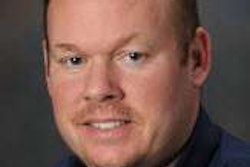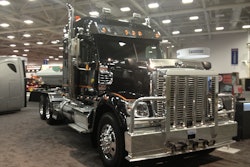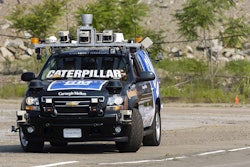Ahead of this year’s edition of the Five Flashiest Fleets contest at Randall-Reilly sister publication Commercial Carrier Journal, Hard Working Trucks takes a peak at several of the local, specialty fleets that entered. Fleet graphics, of course, are meant to be eye-catching and memorable, but the best designs should also say something about what the company does, or who the customer is. Whether it’s cows or camo, a good design increases brand awareness every time a truck leaves the yard. That truck may deliver products, but it should also bring back new business. 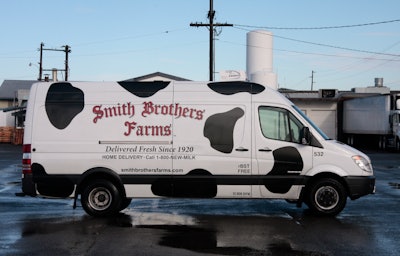
Smith Brothers Farms, based in Kent, Wash., is known as “Milkman to the Puget Sound for over 90 years,” and for the last quarter-century or so the company’s fleet has been readily recognizable for the black-and-white markings associated with milk cows.
“It’s easy, cheap marketing,” says Todd Behan, the dairy’s vice president. “Essentially, the whole Puget Sound population knows us by the that spot pattern.”
The company has 50 milk trucks and another half-dozen smaller retail sales vans.
On the wholesales side, Smith Brothers Farms sells to grocery stores, schools and coffee shops. The company is also one of the remaining handful of dairies in the U.S. that still sell and deliver products to customers at their homes. The company sells more than 500,000 gallons of milk a month.
The graphics are basically stick-on decals, and last about five years, Behan explains. But the company finds them well worth the money, compared to the $86,000 cost of a new truck.
“Throwing another $800 on it to have our branding is a small investment to make,” he says, adding that the smaller sales vehicles are even less expensive to brand. “It’s money well spent.”
And while, in marketing terms, 25 years is quite a long time to stick with a particular corporate logo or image, Smith Brothers Farms has no plans for a fleet makeover – and least not before the cows change their spots.
“We’re still getting our milk mostly from Holsteins,” Behan says, laughing. “If we ever go to Jersey cows, or anything that’s all brown, I don’t know what we’d do.”
Colonial Materials Inc., of Fayetteville, N.C., is a local drywall and specialty building materials supplier. A big part of the company’s commercial business – and much of the area’s economy – depends on Fort Bragg, the huge U.S. Army installation nearby, says Kevin Coble, Colonial’s operations manager. CMI was looking for a way to recognize the military in its branding.
“We’d seen a lot of other folks in different parts of the country do the camouflage wraps and whatnot, but it just doesn’t look good on a boom truck,” Coble says. “It’s too much. There are just too many corners on the truck and the wraps don’t stay.”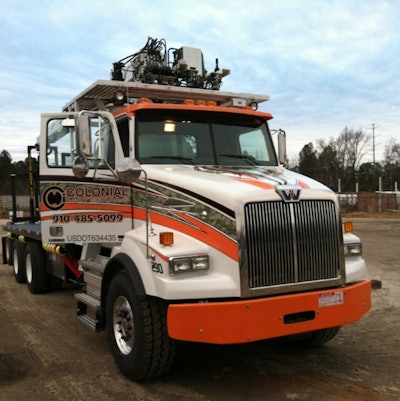
And the company didn’t want to abandon its well-known and distinctive paint scheme.
“Our signature color is orange. The new design incorporates our own color with just enough camouflage to give a shout-out to the military,” he says. “A lot of thought and time went into it, but the cost to do it to the truck was pretty reasonable. Corporate thought it was a great idea, so that’s what we did.”
As an established company in the area, CMI had the luxury of not worrying too much about its branding, but the recession brought a lot of new competition into the market as private-sector construction slowed dramatically.
“In our line of work, 20 years ago image was an issue. Ten years ago, customers just flat out didn’t care what it was that showed up, so long as they got what they were looking for,” Coble says. “But now that’s changing back. Image, perception, the whole safety culture is a huge deal.”
And the investment in some fancy truck striping is paying off.
“When we pulled in the main gate the first time, we were held up by all the GIs taking pictures next to the truck. We still get young GIs blowing their horns, waving, saluting. That’s been really cool, to see the appreciation from them,” Coble says. “The customers like to see that reaction. This has helped us stay on top. It’s surprising that it’s been that big of a deal, but it’s definitely helped.”

